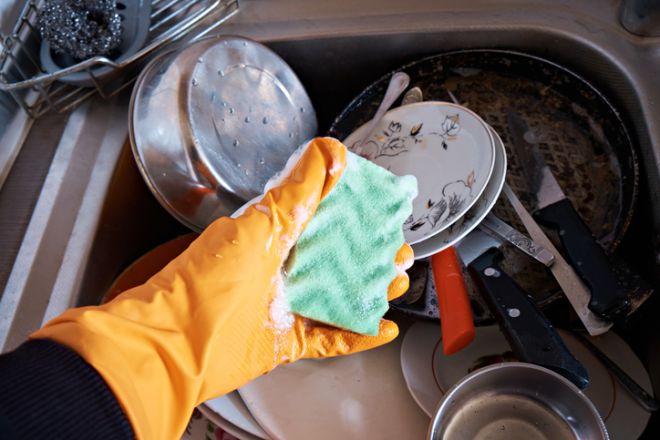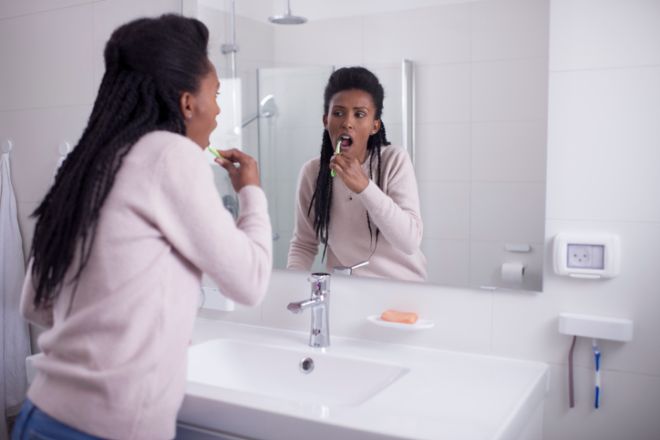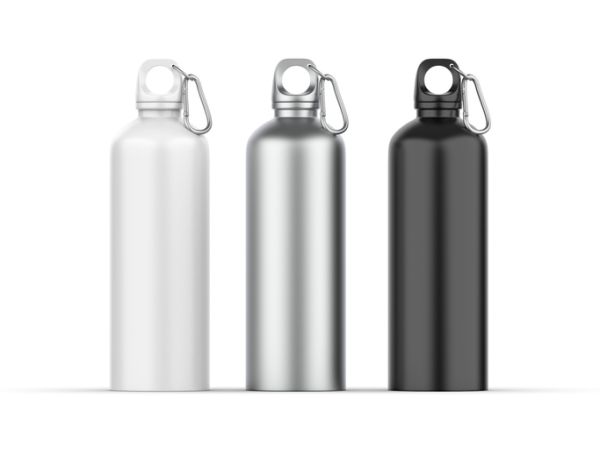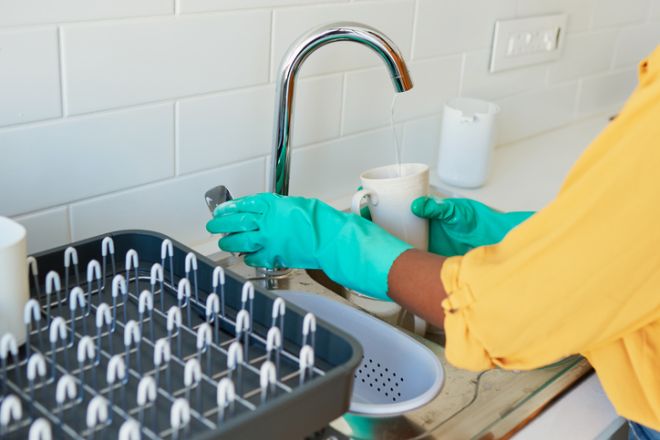4 Surprising Germ Hotspots In Your Home
You’re Cleaning The Wrong Things! These 4 Germ Magnets In Your Home Might Be Making You Sick - Page 2
Share the post
Share this link via
Or copy link

When it’s time for a thorough home cleaning from top to bottom, you might start with the bathroom or kitchen, thinking that they are the germiest places in your home, but you’d only be half right. Some of the most unexpected everyday items harbor surprising amounts of bacteria, and if you’re not careful, you could be missing key areas of the home that require thorough cleaning.
Here are four items in the home that you should give a good scrub every cleaning day, according to health experts.

1. Your toothbrush might be a germ magnet.

One thing that you may not suspect to clean is your toothbrush. Toothbrushes can carry more than 100 million bacteria, according to Periodontal.com, including E. coli, a type of bacteria that can cause diarrhea. If your toothbrush lives anywhere near your toilet, microbiologist Michael Schmidt from the Medical University of South Carolina told Time that “You may as well be swirling it in toilet water.”
Love MadameNoire? Get more! Join the MadameNoire Newsletter
We care about your data. See our privacy policy.
When a toilet is flushed, it releases a plume of particles into the air, some of which contain traces of fecal matter. On average, this germ cloud spreads about a foot in every direction. But older, less efficient toilets can spew particles up to six feet. That’s far enough to reach your toothbrush, even if you think it’s safely tucked away.
While most healthy people can fend off the microbes we encounter daily, Schmidt warns that immunocompromised individuals are more vulnerable. And as microbiologist Kelly Reynolds explained, repeated exposure can still affect anyone, causing fatigue, stomach upset, or even anxiety.
To keep your toothbrush free of gems, keep it stored in a closed cabinet, or at the very least, as far from the toilet as possible. And yes, put the lid down before flushing.
RELATED CONTENT: Could Your Dildo Be Bad For Your Health?
2. Reusable water bottles: Convenient…and crawling with bacteria.

You’d expect your reusable water bottle to be cleaner than a dog’s bowl, right? Think again. One study found that these bottles can carry up to 14 times more bacteria than a dog dish. Water is an ideal breeding ground for germs, especially if it sits in your bottle for long periods.
Schmidt told Time that when we leave water inside our reusable bottles for a long period of time, it can “multiply quickly.” However, with a simple routine, you can maintain cleanliness. Just fill your bottle with warm water and a drop of dish soap, then give it a vigorous shake to loosen bacteria clinging to the sides. Rinse and wash your bottle daily, and don’t let water sit for hours (or days).
3. The couch: Your cozy germ haven.

Think your couch is a safe haven? Not quite. Reynolds says that after handling raw meat or using the bathroom, many people head straight for the couch, transferring germs right to the armrests and remote controls. In fact, Reynolds’ team once investigated a series of MRSA infections among firefighters and traced the source back to the upholstered couch at their station.
To prevent illness, regularly wipe down high-touch areas, such as armrests and remotes, especially after cooking or cleaning. Giving them a good swipe with a Clorox wipe will suffice.
4. Sink Faucets: The dirty truth.

Ironically, the very tools we use to get clean—faucets, sponges, vacuums—can become some of the dirtiest items in the home. “When you turn them off, you’re picking up organisms,” Schmidt explained.
For example, handling raw chicken can introduce Campylobacter, a bacteria that can cause two weeks of severe diarrhea if it spreads. So, the next time you touch your faucet in the bathroom or kitchen, use a paper towel or elbow to turn them off when possible. And don’t forget to clean your sink and handles regularly, especially after cooking.
Germs are everywhere, but with a little awareness and a few simple habits, you can drastically reduce your risk of getting sick.
RELATED CONTENT: ‘Clean & Cute’ Founder Dr. Tosha Rogers Discusses Using Panty Washes And Tips For Building A Vaginal Care Routine
-

Vontélle Eyewear Founders Score History-Making Licensing Deal With Paramount
-

My Husband And I Attempted To Have A Creative Date Night At Home -Without A Babysitter - Here's How It Went
-

She Tried It: Ivy Park Drip 2 and 2.2 Black Pack
-

The Ozempic Side Effect No One Saw Coming — And It’s Showing Up On Your Head



